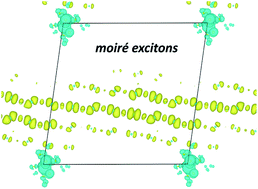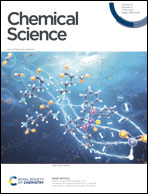Predictions of moiré excitons in twisted two-dimensional organic–inorganic halide perovskites†
Abstract
Recent breakthrough in synthesizing arbitrary vertical heterostructures of Ruddlesden–Popper (RP) perovskites opens doors to myriad quantum optoelectronic applications. However, it is not clear whether moiré excitons and flat bands can be formed in such heterostructures. Here, we predict from first principles that twisted homobilayers of RP perovskite, MA2PbI4, can host moiré excitons and yield flat energy bands. The moiré excitons exhibit unique and hybridized characteristics with electrons confined in a single layer of a striped distribution while holes localized in both layers. Nearly flat valence bands can be formed in the bilayers with relatively large twist angles, thanks to the presence of hydrogen bonds that strengthen the interlayer coupling. External pressures can further increase the interlayer coupling, yielding more localized moiré excitons and flatter valence bands. Finally, electrostatic gating is predicted to tune the degree of hybridization, energy, position and localization of moiré excitons in twisted MA2PbI4 bilayers.

- This article is part of the themed collection: 2021 Chemical Science HOT Article Collection


 Please wait while we load your content...
Please wait while we load your content...